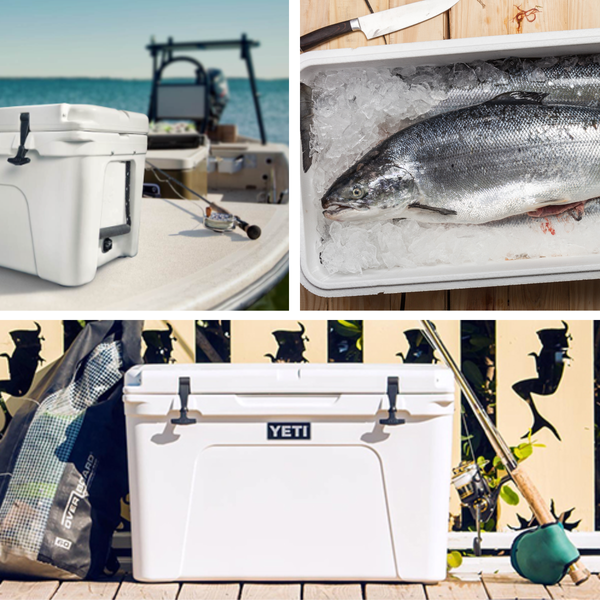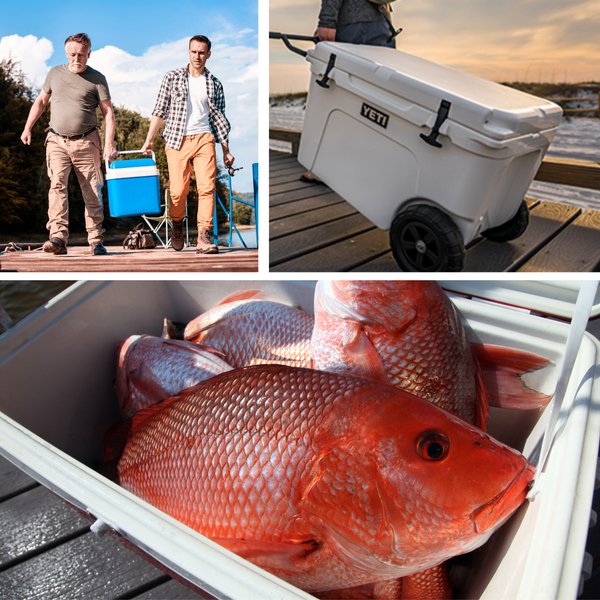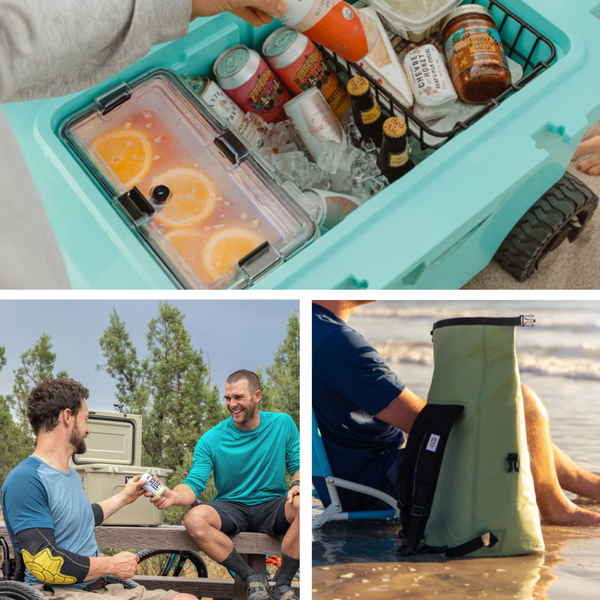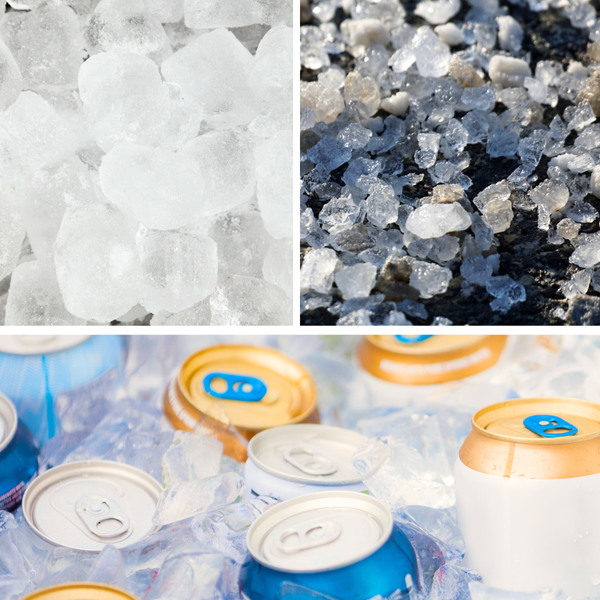Key Takeaways:
- Covering a cooler with a wet towel can enhance ice retention through evaporative cooling.
- The effectiveness of this method depends on environmental conditions and cooler quality.
- Proper packing techniques and additional insulation can also extend the cold life of your cooler.
When the sun is blazing and you're out enjoying a picnic, a camping trip, or a day at the beach, keeping your drinks cold and your food fresh is a priority. You've probably heard the tip: cover your cooler with a towel to keep it cold longer. But does covering a cooler with a towel help, or is it just an old wives' tale? Let's dive into the science and practicality behind this cooling strategy.
The Science of Evaporative Cooling
Evaporative cooling is a process where water absorbs heat as it transitions from a liquid to a gas. When you place a wet towel over your cooler, the theory is that as the water in the towel evaporates, it draws heat away from the cooler's surface, keeping the air inside cooler for a longer period. This is the same principle that our bodies use when we sweat to cool down.
Cooler Quality and Insulation
The effectiveness of a towel in keeping your cooler cold also depends on the quality of the cooler itself. High-end coolers like Yeti coolers are designed with superior insulation and sealing capabilities, which can maintain ice for days. For these coolers, the addition of a towel might offer marginal benefits. However, for less insulated coolers, a wet towel can provide significant extra insulation and help retain ice longer.

Wet Towel vs. Dry Towel
A wet towel utilizes evaporative cooling, while a dry towel acts as an additional layer of insulation. On a hot day, a wet towel might be more effective as it can actively cool the air around the cooler. However, in humid conditions where evaporation is slower, a dry towel might be the better option to simply add another barrier against the warm air.
The Role of Ice Packs and Block Ice
Using block ice or ice packs in your cooler can be more effective than ice cubes due to their larger size and slower melting rate. When you combine this with a towel covering, you're giving your cooler the best chance to keep things cool. Block ice acts as a solid mass that maintains its low temperature longer, while a towel can prevent warm air from seeping in quickly.
Packing Techniques for Optimal Cooling
How you pack your cooler can also influence how well the towel trick works. Pre-cooling your food and drinks hours prior to packing, filling all extra space with extra ice, and keeping the lid closed as much as possible are all strategies that can help. When you cover a well-packed cooler with a towel, you're adding an extra layer of defense against temperature changes.

The Impact of External Temperature
The ambient temperature plays a significant role in how well the towel method works. On a cooler day, the towel might not make a noticeable difference. However, on a hot day, especially in dry climates, a wet towel can provide a substantial cooling effect through evaporation.
Maximizing Ice Retention in Your Ice Chest
When it comes to keeping your cooler colder for longer, understanding how to maximize ice retention is key. Using dry ice, for instance, can keep your ice chest in a deep freeze state much longer than regular ice. Dry ice is frozen carbon dioxide and is much colder than ice made from water, which means it can keep your cooler completely frozen for days, depending on the quantity used. However, it's important to handle dry ice with care, using gloves, and to ensure your cooler is ventilated to prevent gas buildup.
In addition to dry ice, pre-cooling your cooler can significantly extend the life of your ice. Before you fill your ice chest with fresh ice, chill it overnight with a sacrificial bag of cubed ice or pre-frozen water bottles. This initial step brings the internal temperature of the cooler down, so when you pack it with the ice for your trip, the ice melts at a slower rate. This is especially useful for long trips where you need to maintain a cold environment in your cooler for an extended period.
Strategic Cooler Packing for Extended Trips
For those who love car camping or embarking on long trips, strategic cooler packing is a game-changer. Begin by filling the bottom of your cooler with a layer of cubed ice, creating a cold base. Then, place a layer of pre-frozen water bottles or ice packs on top. These bottles serve a dual purpose: they act as additional ice packs and provide a cold drink as they thaw. It's also a good idea to use a sleeping bag or blanket to cover the whole cooler overnight, which adds an extra layer of insulation and slows down the rate at which the ice melts.
Another tip is to separate your food and drinks into two different coolers. The cooler with drinks tends to be opened more frequently, which accelerates ice melt due to the introduction of warm air. By keeping them separate, the cooler with food remains closed and insulated, preserving the remaining ice for a longer period. Always remember to refill the drink cooler with more ice as needed, and keep the food cooler filled to capacity with a significant amount of ice to maintain a consistent chill.

Additional Insulation Methods
Besides towels, other materials can be used for extra insulation. Sleeping bags, paper towels, or even a layer of duct tape can offer additional barriers against heat. The goal is to keep the hot air out and the cool air in, and sometimes combining these methods with a towel can yield the best performance.
The Importance of Shade
Placing your cooler in the shade is another crucial step in keeping it cold. Direct sunlight can quickly heat the surface of your cooler, accelerating ice melt. By keeping your cooler in the shade and covering it with a towel, you're maximizing the cooler's ability to retain ice longer.
Using Salt to Lower the Freezing Point
Rock salt is often used in ice cream making because it lowers the freezing point of ice, causing it to melt at a slower rate. Sprinkling some rock salt over the ice in your cooler can have a similar effect, prolonging the time your cooler stays cold. This, combined with a towel cover, can extend the life of your ice even further.
Separate Coolers for Food and Drinks
Having one cooler for drinks and another for food can help maintain temperatures. Drinks tend to be accessed more frequently, which means the cooler is opened often, letting cold air escape. By using a separate cooler for all the food, you minimize the number of times it's exposed to warm air, and a towel can help maintain its temperature even when you're reaching for a cold beverage.

Pre-Freeze Water Bottles for Dual Use
Freeze water bottles and use them in your cooler instead of loose ice. They act as ice packs and provide cold water as they melt. This method reduces the mess from melting ice and provides a solid block of ice that retains cold longer. Covering the cooler with a towel in this case can help maintain the frozen state of your water bottles for a longer trip.
The Debate: Towel or No Towel?
While there's no one-size-fits-all answer, the consensus is that covering a cooler with a towel can help, especially in certain conditions. Whether you're using a wet cloth for evaporative cooling or a dry one for extra insulation, this simple trick could be the difference between a refreshing drink and a lukewarm disappointment.
Summary
Covering a cooler with a towel can indeed help keep it cold longer, primarily through evaporative cooling or added insulation. The effectiveness of this method is influenced by factors such as cooler quality, external temperature, and packing techniques. By understanding these factors and combining them with the towel trick, you can ensure that your cooler performs at its best.
FAQ Section
Q: Is it better to use a wet or dry towel to cover a cooler?
A: It depends on the environment. A wet towel is more effective in dry, hot conditions due to evaporative cooling, while a dry towel is better in humid conditions as it provides extra insulation.
Q: Can I use other materials besides a towel for insulation?
A: Yes, materials like sleeping bags, paper towels, or even duct tape can provide additional insulation to keep your cooler cold.
Q: How else can I improve my cooler's ice retention besides covering it with a towel?
A: Pre-cool your items, use block ice or frozen water bottles, pack your cooler tightly to eliminate extra space, and keep it in the shade. Using a separate cooler for drinks and food can also help retain ice longer.










